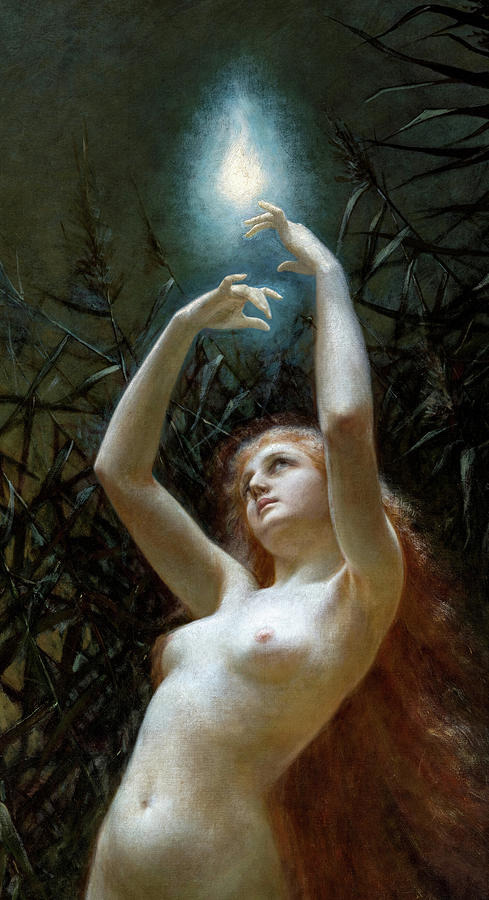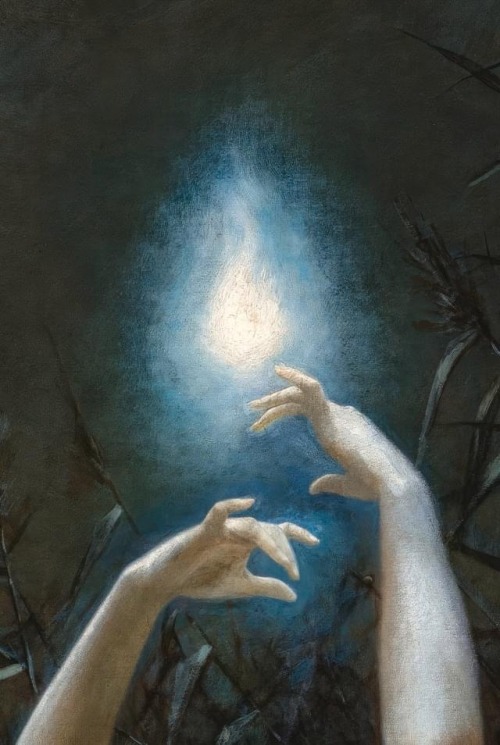The-insydious - Praise Be To The Hive

More Posts from The-insydious and Others

Bloodborne and Brain Structure
So I just ran into the concept of “amygdala hijack” in an article about anxiety, and my brain instantly went “BLOODBORNE”, and it was not wrong. Then I dug further, and all sorts of brain parts map onto elements in Bloodborne, it’s definitely not an accident!
Amygdala hijack is when your brain starts generating overly nightmarish scenarios in response to a situation. And that’s what happens in Bloodborne! The Amygdala snatches you and puts you into deeper levels of the nightmare.
But that’s not all. It got me curious what other brain parts map onto creatures/characters, and here we go, some obvious candidates:

Rom looks like the occipital lobe, which is “the visual processing center of the mammalian brain” - she gained eyes, right!
The ascended hunter slug, is a good candidate for the hippocampus: “It has a major role in learning and memory. It is a plastic and vulnerable structure that gets damaged by a variety of stimuli.”
Thalamus is among other things responsible for “the regulation of consciousness, sleep, and alertness.” Not sure what to map it on directly, but seems relevant.
There is probably more, but I am in no place or shape to dwell further. This makes me wonder how much of Bloodborne is actually all in the Hunter’s head. Or someone’s head at any rate.
In conclusion, Rom ascended to be part of the brain, the Hunter ascended to be another part of the brain. Maybe with enough people ascending they can have at least one functioning brain between them LOL.
Why You Should Learn Multiple Divination Methods

Divination is a powerful tool for gaining insight, guidance, and clarity in life. While many practitioners have a preferred method, learning multiple forms of divination offers unique advantages and deepens your spiritual practice. Here’s why expanding your divinatory skill set is beneficial.
Different Tools for Different Questions
Each divination method excels in certain areas. By knowing more than one, you can choose the most effective tool for each situation, for example:
• Tarot provides in-depth storytelling and psychological insight.
• Runes offer direct, ancient wisdom with a no-nonsense approach.
• Pendulum dowsing gives quick yes/no answers for direct guidance.
• Scrying (mirrors, water, flames) connects you with visions and subconscious messages.
Having multiple techniques allows you to select the best one for your needs.
Cross-Validation for Stronger Readings
Using multiple forms of divination to confirm a message strengthens its reliability. If tarot, runes, and pendulum dowsing all point to the same answer, you can be more confident in your reading.
Adaptability in Different Environments
Some divination methods require more space or time than others. Having multiple techniques lets you practice divination anywhere, for example:
• Tarot and runes are great for detailed readings but require physical tools.
• Numerology or astrology can be done mentally when you’re without tools.
• Pendulums and scrying can be subtle enough for on-the-go divination.
Deeper Understanding of Symbolism and Intuition
Each system has its own symbolic language. Learning multiple forms of divination enhances your ability to recognize patterns and messages from the universe. For example:

• Studying astrology deepens your understanding of tarot’s planetary influences.
• Learning numerology helps with interpreting numbers in divination spreads.
• Scrying sharpens your intuitive abilities for other methods.
The more symbols and correspondences you understand, the stronger your divinatory skills become.
Personal and Spiritual Growth
Every divination system has its own philosophy and historical roots. By exploring multiple methods, you:
• Gain a broader perspective on the unseen forces in your life.
• Connect with different spiritual traditions and expand your knowledge.
• Strengthen your intuitive and psychic abilities through diverse practices.
Enhanced Connection with Spirits and Deities
Some deities or spirits prefer specific divination methods. Expanding your knowledge allows you to communicate more effectively with different energies.
• Hekate is often associated with scrying and key-based divination.
• Odin, a god of wisdom, is connected to the runes.
• Mercury/Hermes aligns with dice and lot casting.
• Many demons are associated with divination practices, such as Gremory, Dantalion, Flereous, Delepitore, and more.
Having multiple methods lets you tailor your practice to your spiritual allies.
Avoiding Divination Burnout or Bias
Using only one form of divination can sometimes lead to mental fatigue or a fixed perspective. Switching between different methods keeps your practice fresh and prevents over-reliance on a single tool.
Knowing multiple forms of divination makes you a more well-rounded and adaptable practitioner. It strengthens your intuition, deepens your spiritual connections, and gives you access to the best method for any question or situation.
Types Of Divination


Devises et Emblemes Anciennes & Modernes (1699) Daniel de la Feuille


Will o the Wisp, 1888 by Lev Lerch
ashes to ashes, dust to dust, reeses to pieces
-
 arenitaspooky liked this · 1 week ago
arenitaspooky liked this · 1 week ago -
 hauntingelegy liked this · 1 week ago
hauntingelegy liked this · 1 week ago -
 m-o-t-o-d-i-c-k-l-e-t liked this · 1 week ago
m-o-t-o-d-i-c-k-l-e-t liked this · 1 week ago -
 derinsohbet liked this · 1 week ago
derinsohbet liked this · 1 week ago -
 primusinterpas3 liked this · 1 week ago
primusinterpas3 liked this · 1 week ago -
 l4dym4kim4 reblogged this · 1 week ago
l4dym4kim4 reblogged this · 1 week ago -
 l4dym4kim4 liked this · 1 week ago
l4dym4kim4 liked this · 1 week ago -
 inviisiblle reblogged this · 1 week ago
inviisiblle reblogged this · 1 week ago -
 diabeticrat liked this · 2 weeks ago
diabeticrat liked this · 2 weeks ago -
 sylynx liked this · 2 weeks ago
sylynx liked this · 2 weeks ago -
 thebucketofblood liked this · 2 weeks ago
thebucketofblood liked this · 2 weeks ago -
 thedaywalker1015 reblogged this · 2 weeks ago
thedaywalker1015 reblogged this · 2 weeks ago -
 thedaywalker1015 liked this · 2 weeks ago
thedaywalker1015 liked this · 2 weeks ago -
 hircocervusus liked this · 2 weeks ago
hircocervusus liked this · 2 weeks ago -
 silvergrimoires reblogged this · 2 weeks ago
silvergrimoires reblogged this · 2 weeks ago -
 dump851 liked this · 2 weeks ago
dump851 liked this · 2 weeks ago -
 gullfiskencxx reblogged this · 2 weeks ago
gullfiskencxx reblogged this · 2 weeks ago -
 gullfiskencxx liked this · 2 weeks ago
gullfiskencxx liked this · 2 weeks ago -
 mox-nix reblogged this · 2 weeks ago
mox-nix reblogged this · 2 weeks ago -
 mox-nix liked this · 2 weeks ago
mox-nix liked this · 2 weeks ago -
 electricsmoke liked this · 2 weeks ago
electricsmoke liked this · 2 weeks ago -
 memyselfanndyou liked this · 2 weeks ago
memyselfanndyou liked this · 2 weeks ago -
 ravenandwolfblog reblogged this · 2 weeks ago
ravenandwolfblog reblogged this · 2 weeks ago -
 meursaullt liked this · 2 weeks ago
meursaullt liked this · 2 weeks ago -
 599155131 liked this · 2 weeks ago
599155131 liked this · 2 weeks ago -
 autemdi reblogged this · 2 weeks ago
autemdi reblogged this · 2 weeks ago -
 playdate-for-our-demons reblogged this · 2 weeks ago
playdate-for-our-demons reblogged this · 2 weeks ago -
 playdate-for-our-demons liked this · 2 weeks ago
playdate-for-our-demons liked this · 2 weeks ago -
 batbonesandlace reblogged this · 2 weeks ago
batbonesandlace reblogged this · 2 weeks ago -
 midnight-moon-glow reblogged this · 2 weeks ago
midnight-moon-glow reblogged this · 2 weeks ago -
 jackshite reblogged this · 2 weeks ago
jackshite reblogged this · 2 weeks ago -
 lesfillesducimetiere liked this · 2 weeks ago
lesfillesducimetiere liked this · 2 weeks ago -
 majestativa liked this · 2 weeks ago
majestativa liked this · 2 weeks ago -
 fleshmess liked this · 2 weeks ago
fleshmess liked this · 2 weeks ago -
 eaux-fortes reblogged this · 2 weeks ago
eaux-fortes reblogged this · 2 weeks ago -
 unearthlycaptivation liked this · 2 weeks ago
unearthlycaptivation liked this · 2 weeks ago -
 acr1313 liked this · 3 weeks ago
acr1313 liked this · 3 weeks ago -
 eleusinian-kitten reblogged this · 3 weeks ago
eleusinian-kitten reblogged this · 3 weeks ago -
 eleusinian-kitten liked this · 3 weeks ago
eleusinian-kitten liked this · 3 weeks ago -
 liveundead reblogged this · 3 weeks ago
liveundead reblogged this · 3 weeks ago -
 blackdabbathh liked this · 3 weeks ago
blackdabbathh liked this · 3 weeks ago -
 nocthyia liked this · 3 weeks ago
nocthyia liked this · 3 weeks ago -
 beasts666thbeautty reblogged this · 3 weeks ago
beasts666thbeautty reblogged this · 3 weeks ago -
 unaffectedrealm liked this · 3 weeks ago
unaffectedrealm liked this · 3 weeks ago -
 onrazersedge liked this · 4 weeks ago
onrazersedge liked this · 4 weeks ago -
 sammy-sighbert liked this · 4 weeks ago
sammy-sighbert liked this · 4 weeks ago




